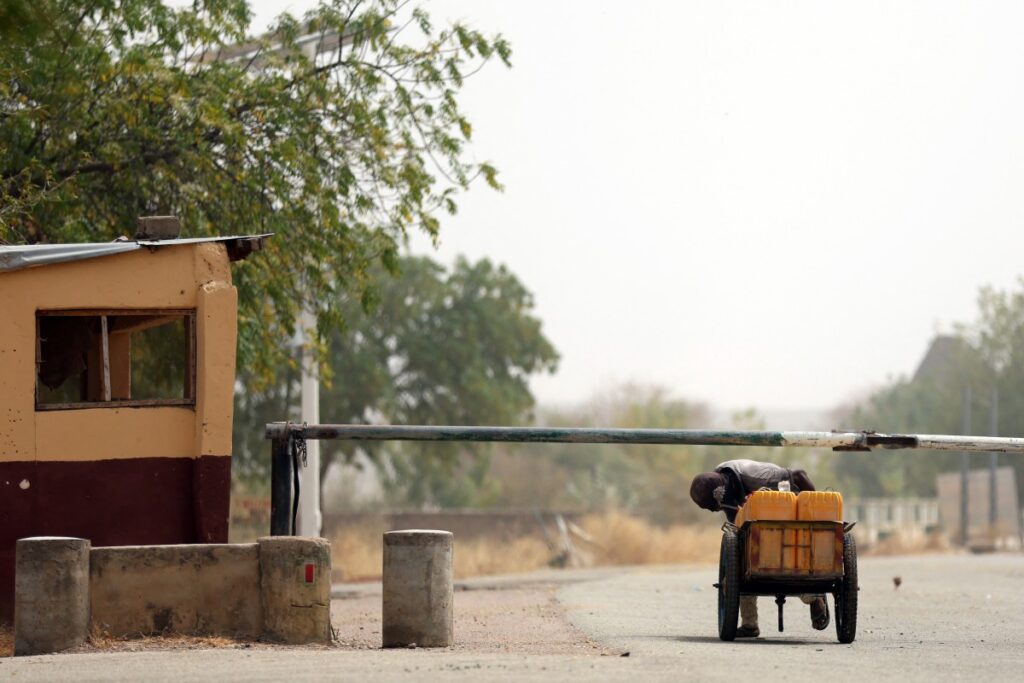[dailymotion code=”kUaKigiajmdzRPwEW3N” autoplay=”yes”]
A new sheriff is in town” often heralds a breakthrough in crime combat. How appropriate that phrase announces trends in the ravaging coronavirus, I do not know. But I could simply say the nightmare is not over; new corona sheriffs are in town. The larger question, to put it in Bob Marley’s words, is who will shoot them down?
Indeed, it was Professor David Simon, my friend and teacher, who first gave me a hint in December last year of the new variant that hit the United Kingdom. I had earlier registered it in part 39 of this serial. In his words, “The gamechanger has evidently been a new variant strain of the coronavirus that is up to 70% more transmissible and spreading rapidly, although it is not more virulent as such. Hospitals in Tier 4 areas are filling up fast again, with non-essential surgery being cancelled in some for the first time since the first wave.” The British strain named B.1.1.7 is one of the new corona sheriffs in town. According to Joel Achenbach of The Washington Post, “The variant first appeared in genomic surveys in the United Kingdom on Sept. 20, but did not get tagged as a “variant of concern” until early December when its rapid spread stunned scientists and spurred lockdowns in southern England.” He went further to convey its infectivity like Professor Simon to the extent that “The B.1.1.7 variant carries a package of mutations, including many which change the structure of the spike protein on the surface of the virus and enhance its ability to bind to human receptor cells. People infected with the variant have higher viral loads, studies have shown, and they may shed more virus when coughing or sneezing.”
Another corona sheriff made an inroad into the beautiful veldan country of South Africa. It assumed the nomenclature B. 1.351. Houriiyah Tegally e tal in their study titled, “Emergence and rapid spread of a new severe acute respiratory syndrome-related coronavirus 2 (SARS-CoV-2) lineage with multiple spike mutations in South Africa”, captured the essential feature of the South African strain in their summary: “Continued uncontrolled transmission of the severe acute respiratory syndrome-related coronavirus 2 (SARS-CoV-2) in many parts of the world is creating the conditions for significant virus evolution. Here, we describe a new SARS-CoV-2 lineage (501Y.V2) characterised by eight lineage-defining mutations in the spike protein, including three at important residues in the receptor-binding domain (K417N, E484K and N501Y) that may have functional significance. This lineage emerged in South Africa after the first epidemic wave in a severely affected metropolitan area, Nelson Mandela Bay, located on the coast of the Eastern Cape Province. This lineage spread rapidly, becoming within weeks the dominant lineage in the Eastern Cape and Western Cape Provinces. Whilst the full significance of the mutations is yet to be determined, the genomic data, showing the rapid displacement of other lineages, suggesting that this lineage may be associated with increased transmissibility.”
Ben Guarino with Angela Fritz of The Washington Post observed the South African strain thus: “A concerning if incidental, result emerged from a vaccine trial in South Africa. Researchers did not set out to study reinfection. But they happened to detect signs of people getting the virus twice, as a variant became dominant there: About 4 percent of subjects were re-infected in that clinical trial after recovering from earlier bouts. Subjects given two doses of Novavax’s experimental vaccine were protected from the variant, named B.1.351.” Nevertheless, South Africa suspended the Oxford-AstraZeneca vaccine rollout after researchers reported the least amount of protection against the new variant. This elicited the retort of Larry Corey, a virologist at the Fred Hutchinson Cancer Research Center to the effect that “The vaccine clearly does not work against this variant for mild and moderate disease…Does it work against severe disease? The answer is: We don’t know.”
From South America is the Brazilian strain, known as P.1. (B.1.1.28.1). This variant was first discovered in Manaus, northern Brazil in December 2020. Indeed, the researchers detected the strain in 42 percent of the samples they tested. They found that the strain had a unique collection of lineage-defining mutations that may be responsible for the increase in transmissibility. Also in Brazil, Roxana Tabakman writing in Medscape, January 26, 2021, cited the first case of re-infection in Bahia caused by a new strain, with the E484K mutation. This new strain is now called P.2. (B.1.1.28.2). Interestingly, the Brazilian strain has travelled through Japanese tourists into Japan. According to the Japanese the National Institute of Infectious Diseases (NIID), a new variant isolate of SARS-CoV-2 was detected from four travelers who arrived in Tokyo from Amazonas, Brazil, on January 2, 2021, at the airport screening.
In Canada, the British Columbia health officials identified another COVID-19 variant in the province through testing. This variant traced to a journey to Nigeria, labelled B.1.525, is new to the province, and Canada. Due to expert uncertainty about the strain, they have tagged it “variant under investigation”.
According to William Booth and Carolyn Y. Johnson of The Washington Post, “Thousands of new variants are circling the planet, but only a few have risen to the level of ‘variants of concern,’ because they are more transmissible, more lethal or are suspected of being able to dodge the antibodies produced by vaccination.” Joel Achenbach has aptly captured the inroad of these strains into the United States, “The coronavirus variant that shut down much of the United Kingdom is spreading rapidly across the United States, outcompeting other strains and doubling its prevalence among confirmed infections every week and a half…” The United States, a major epicentre of covid-19, is contending with new strains of the virus. Marti Leitch of Wexner Medical Center Media Relations reported on January 13, 2021, that scientists at the Ohio State University Wexner Medical Center and College of Medicine discovered a new variant of SARS-Cov-2 that carries a mutation identical to the U.K. strain and yet another strain that acquired three other gene mutations not seen before. However, credence tilts towards their evolution from the strains prevalent in that country. Of a truth, new corona sheriffs are in town, and tough times are ahead.
Akhaine is a Professor of Political Science at the Lagos State University.













